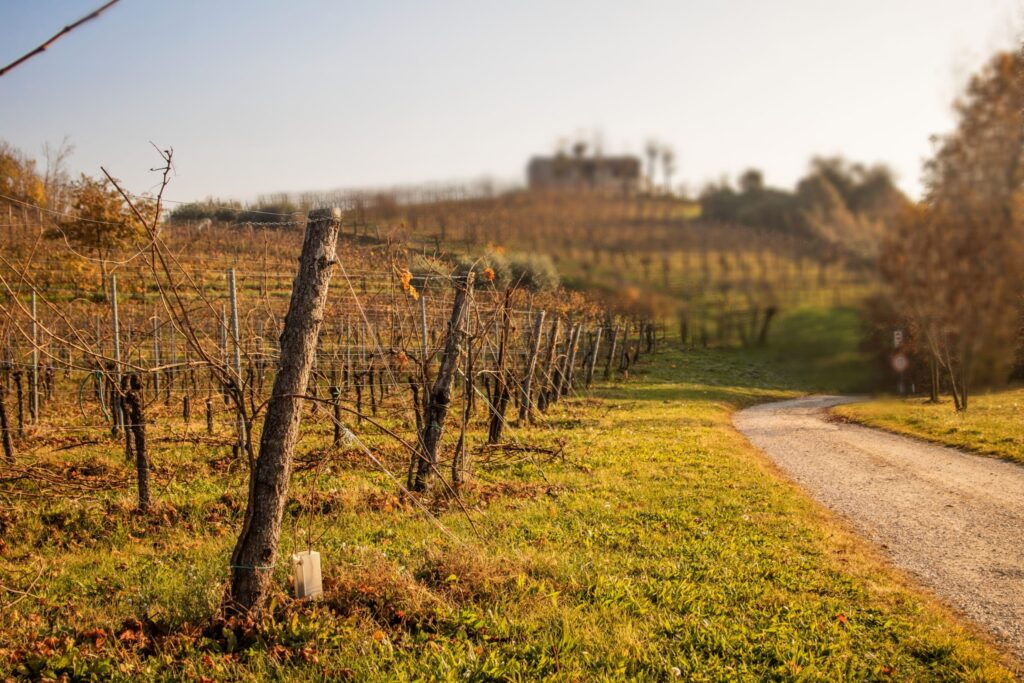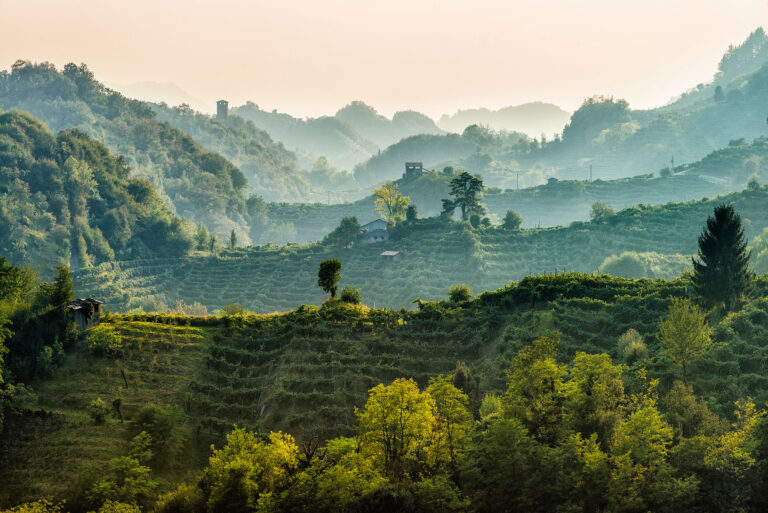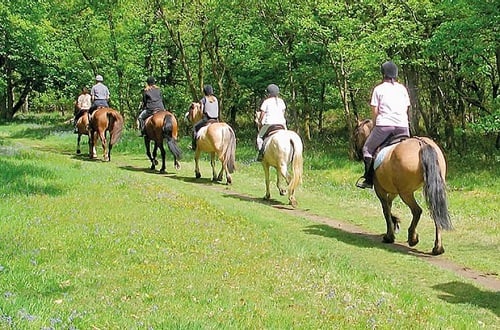The Torchiato path in Fregona
Path of Torchiato, n. 1037, in the Municipality of Fregona
Stages of the route:
Fratte q. 165 – Borgo Luca – Mezzavilla h. 300.
To see: the village of Col di Osigo and the ancient press in the center of the square and the vineyards along the way.
Description
The route starts from the locality of Fratte in Fregona (165 meters) and is dotted with vineyards of Verdiso, Prosecco and Boschera that occupy the slopes up to the edge of the wood. The hills describe a semicircle: this is the morainic amphitheater of Vittorio Veneto. Alders, willows, poplars and hazelnuts are the most frequent plant species.
Head towards Borgo Antonia and towards the picturesque church, continue to Col di Osigo, a village whose emblem is the ancient press and the famous Torchiato production area. Continue to Borgo Luca, to Camp De Supiane (capital of S. Antonio). After Villa Coletti-Carnielutti continue to the square of Osigo (fountain) and to the medieval Danish village, the Church of San Liberale, passing through Borgo Tonus you arrive at Mezzavilla.
Curiosity’
Every year, in the center of Fregona, the Torchiato wine exhibition is organized. This wine, called “vin dele paiolane” (wine of the new mothers) is obtained from three dried grapes: Boschera, Verdiso and Prosecco. In the spring following the harvest, the grapes are crushed and pressed, and the must ferments throughout the summer and matures until the following spring in wooden barrels. The origin of Torchiato derives from the custom of the parishioners to bring the first fruits to the parish priest. These, not having the equipment for winemaking, put the grapes to dry on the racks waiting for the farmers to subject them to pressing, thus obtaining a fortified wine.
TECHNICAL DATA
type: Ideal route for walking
length: 11 Km
difference in altitude: 240 m.
average travel time: 5 hours
difficulty: Easy
period: All year round
clothing: Comfortable and sporty outfit, trekking shoes
To be seen:
Church of Osigo – locality Osigo, municipality of Fregona
There is no precise information on when the first church of Osigo was built. According to tradition, the first chapel was built by Dai Montanara to contain the small population of the town. It contains an artistic silver cross to the left of the main altar, offered by the heirs of Antonio De Luca in 1847. The first historical document relating to it dates back to 1474 on the occasion of the pastoral visit made by Bishop Trevisan, to the parish of Fregona, from to whom Osigo depended as Curazia. The chapel was enlarged and entirely plastered with marmorino in 1838. The rebuilt church was consecrated by Bishop Bellati in 1851. In 1865 Bishop Manfredo erected the Curazia di Osigo as a parish. In the early twentieth century the church was enlarged taking on the current structure.
Osigo
The church with the bell tower and the Borgo Da Re
Villa Trojer – Municipality of Fregona
17th century villa. The stylistic elements of this villa and in particular the two large loggias recall the villas of the mountain areas. Although the central nucleus is baroque, the loggias are of pure Renaissance style with columns of stone and round arches. The eastern side retains original elements in the jambs of the doors open to the loggia, in the oval holes that give light to the ceiling and in the shelves that frame the roof.
Note: the whole territory is marked by manor houses: Villa Altan-Pancetta alle Fratte, those of the Todesco-Salvador alle Buse, the Laurenti in Danese, the Giustiniani in Borgo Piazza, the Casoni in Borgo Consola and the Carnielutti in Osigo all subject to recent alterations. Also of interest are the historic centers, such as that of Soneglo, with houses with a particular type of exposed stones.
How to get to Fregona
CAR: Fregona is located near Vittorio Veneto. The state road n. 51 Alemagna; the closest motorway route is that of the A27 Mestre-Vittorio Veneto-Pian di Vedoia which can be accessed via the Vittorio Veneto tollbooth, located 9 km away.
TRAIN: The railway network is easily reached. The nearest station is Vittorio Veneto, along the Conegliano-Ponte nelle Alpi line, only 7 km away.
Fregona – History
The toponym derives from the Latin expression FRIGONIA TELLUS, which means ‘land of the Friga’, which is the name of one of the most important waterways. Its origin, therefore, dates back to Roman times, as also toponyms of Latin derivation from other nearby locations and interesting archaeological finds testify. The discovery of some axes referable to the Iron and Bronze Ages suggests, however, that it was inhabited since the most distant antiquity. It was seriously damaged by the barbarian invasions, but in the feudal age it experienced a certain prosperity, thanks to one of the greatest Italian families of the thirteenth century, the Da Camino. In local history, an episode that happened
in 1509: captain Francesco Forte, at the head of a group of soldiers, gave important aid to the republic of Venice in the liberation of the city of Serravalle, previously occupied by the army of the emperor of Austria. Venice, out of gratitude, exempted the inhabitants from paying taxes, a privilege enjoyed until 1797, the year in which the Serenissima fell. Regarding the historical heritage, the civil buildings are represented by the seventeenth-century Villa Trojer-Lucherini-De Mori, which has elements in the Baroque style, while the religious ones include the majestic Gothic-style bell tower, erected in the nineteenth century.




